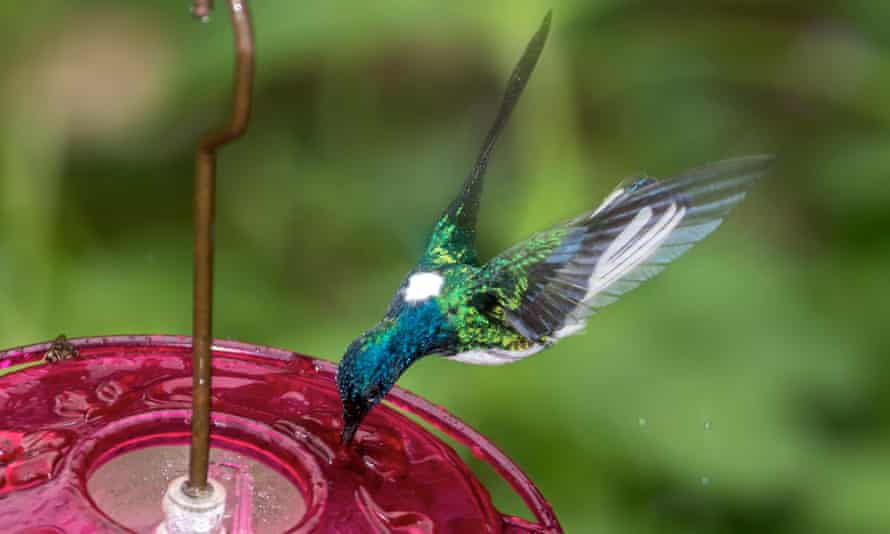Female hummingbirds look like males to avoid attacks, study suggests
Some females found to have evolved with bright plumage, which seems to protect against male aggression

They may zip around looking cute and sociable, but the world of hummingbirds is rife with aggression. Now it looks like some female hummingbirds have evolved to avoid this – by adopting the bright plumage of their male counterparts.
US researchers captured more than 400 white-necked Jacobin hummingbirds in Panama.
Surprisingly, they found that more than a quarter of females had similar ostentatious plumage – iridescent blue heads, bright white tails, and white bellies – to the males. Typically, female Jacobins tend to be duller in comparison, brandishing muted green, grey or black hues that allow them to blend into the environment.
Experiments conducted by the researchers suggested that the flashy male-like garb helped the females avoid aggressive male behaviours during feeding, such as pecking and body slamming.
When the researchers examined the captured birds, they found that all the young or juvenile Jacobins displayed flashy hues. Generally, across most bird species, juvenile birds typically resemble the corresponding sex of the adult birds.
“So, it was clear something was at play,” said the study’s first author, Jay Falk, who is now a postdoctoral researcher at the University of Washington but led the research as a part of the Cornell Lab of Ornithology and Smithsonian Tropical Research Institute.
“Every female and male start out looking like the adult males. Then as they age, about 20% of the females keep that plumage, and then 80% shift out into the drab plumage.”
It is generally believed that ornamental, flashy plumage in many species has evolved as a function of competition for mates. But in this case, most of the females weren’t retaining that colourful plumage when they were sexually mature and looking for mates, which was a hint that so-called sexual selection wasn’t the reason, he noted.
Falk and his colleagues attempted to answer why some female Jacobins continued to resemble males as adults by leaving stuffed hummingbirds on feeders (male-like females, drab females and males) and watched as real hummingbirds interacted with them in different locations in Panama.
They found that most of the sexual behaviour by what appeared to be real male hummingbirds was directed at the stuffed drab females, which reinforced the idea that the sexual selection wasn’t the right explanation, according to the study published in the journal Current Biology.
However, when they looked at acts of aggression between the stuffed and real hummingbirds, the researchers found that stuffed drab females were often attacked more than the stuffed flashy females. “So that kind of gave us an indication that it has something to do with social selection and competition for food, rather than competition for mates,” said Falk.
In general, people thought of hummingbirds as tiny little fairies drinking nectar from flowers, he added. “But they’re constantly fighting with each other … aggression is a big part of their lives.”